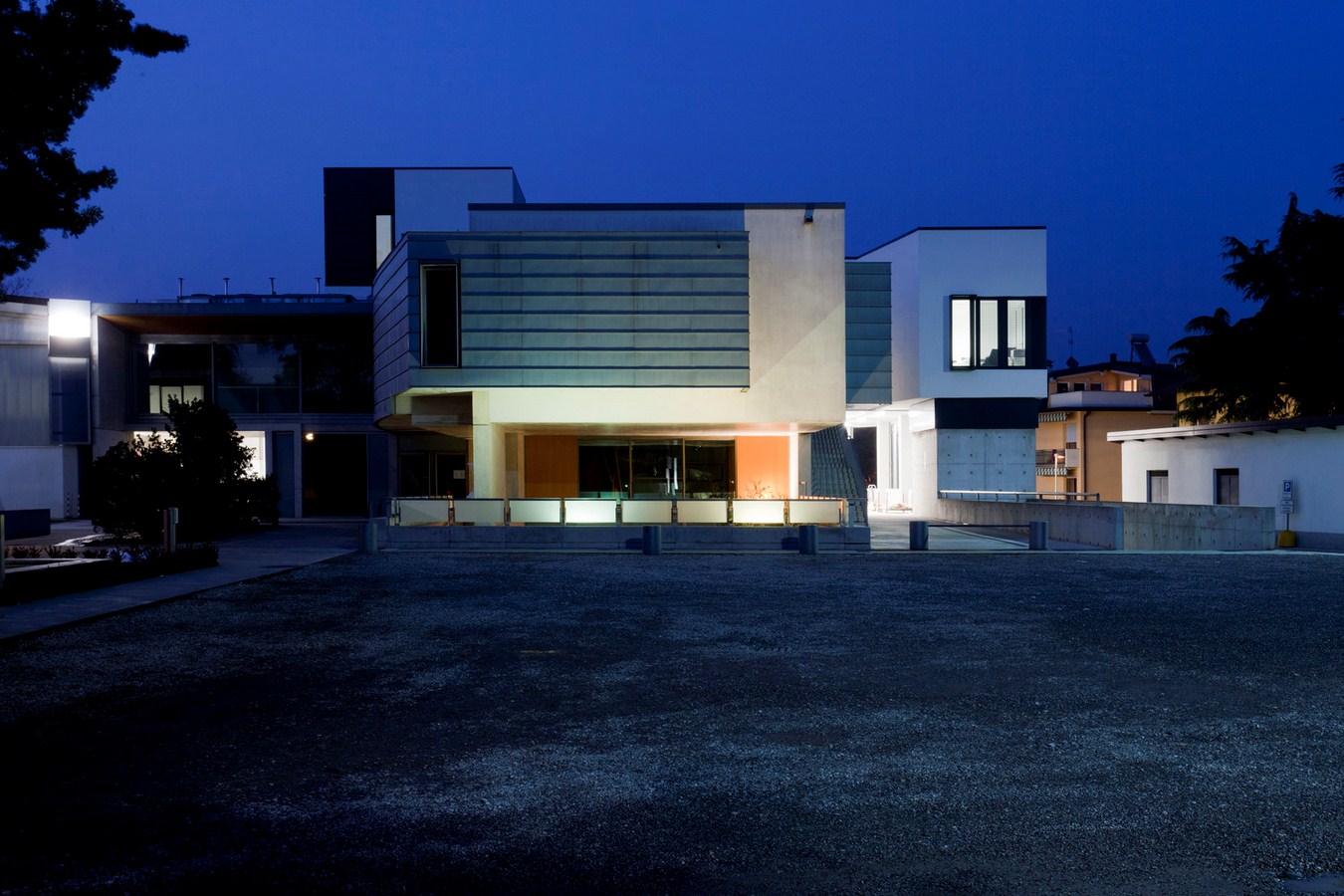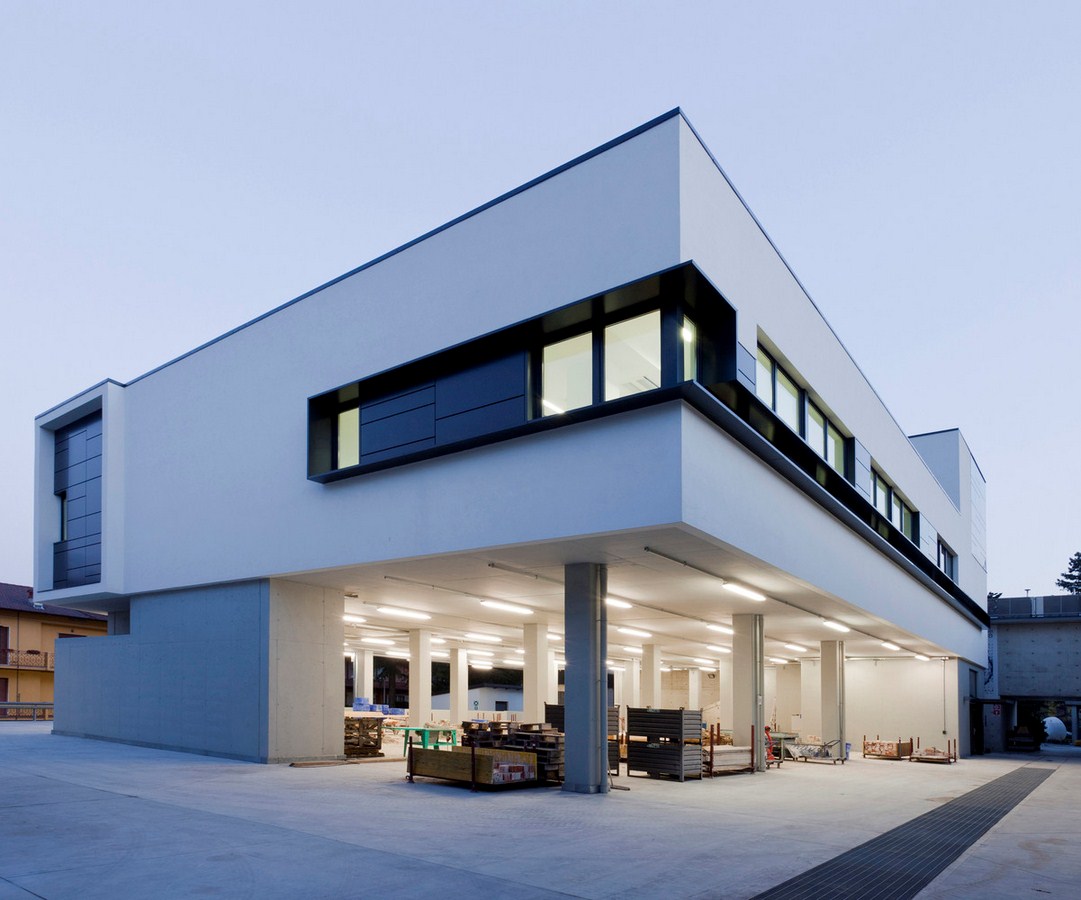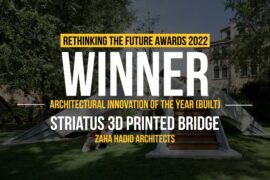Project Info
Architects: Brembilla+Forcella Architetti
Location: Seriate Bergamo, Italy
Project Team: Marco Carrara, Marco Zenucchi, Dino Poloni, Luca Bresesti
Client: Scuola Edile Bergamasca s.r.l.
Year: 2013
Photographs: Giovanna Silva

Introduction
The building is located within the pre-existing compound of Scuola Edile di Bergamo-SEB (school for construction workers), an heterogeneous mix of edifices built over the past 50 years that this new architecture joins accurately. Conceived as a mixed-use architecture, the building encompasses a variety of spaces devoted to the different processes and crafts of the construction industry: labs where future builders learn by doing, classrooms for theoretical training, meeting halls, first-aid stations etc.

details
This mixed-use development reflects into the building volume composition, where protrusions, shifts in materials (plaster, raw concrete, metal) and the apparent randomness of the openings arise from illuminating engineering needs and visually and functionally dialogue with the surrounding system.

To the south the building is connected to the auditorium, sharing its architectural language and the system of paths. To the east there is the office area, articulated through variable windows which modulate the light over the day. The northern side, which is actually the main façade, is designed referring to the neighboring buildings. Finally, to the west, a double order of openings lights up the classrooms: the first line is placed at eye level, while the second is placed upwards to capture the greatest amount of sunlight. Thanks to a grid of pilotis, the ground floor is left completely free to host construction practice.

Rather than establish itself as a solo voice within a complex area, the new building records the conditions of a typical industrial area, functioning as a hinge and as the glue between the various elements, aesthetically and functionally. The result is a multiform and flexible architecture, which will be able to accommodate and serve functions other than those of today. In this perspective, the building is already designed to accommodate further expansion in the future. The building, certified energy efficiency class A, has been constructed with a supported concrete structure and dry stone walls.





